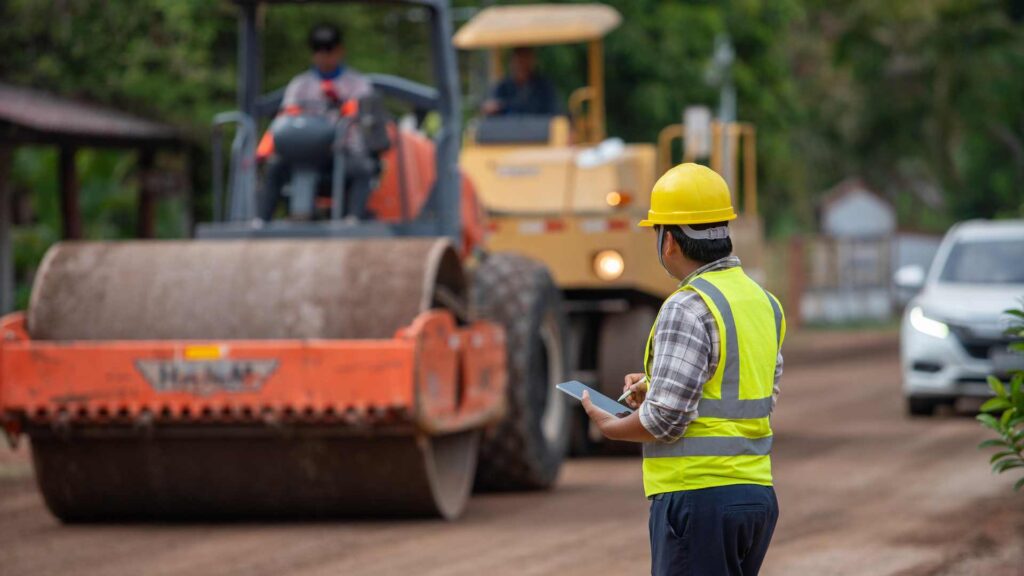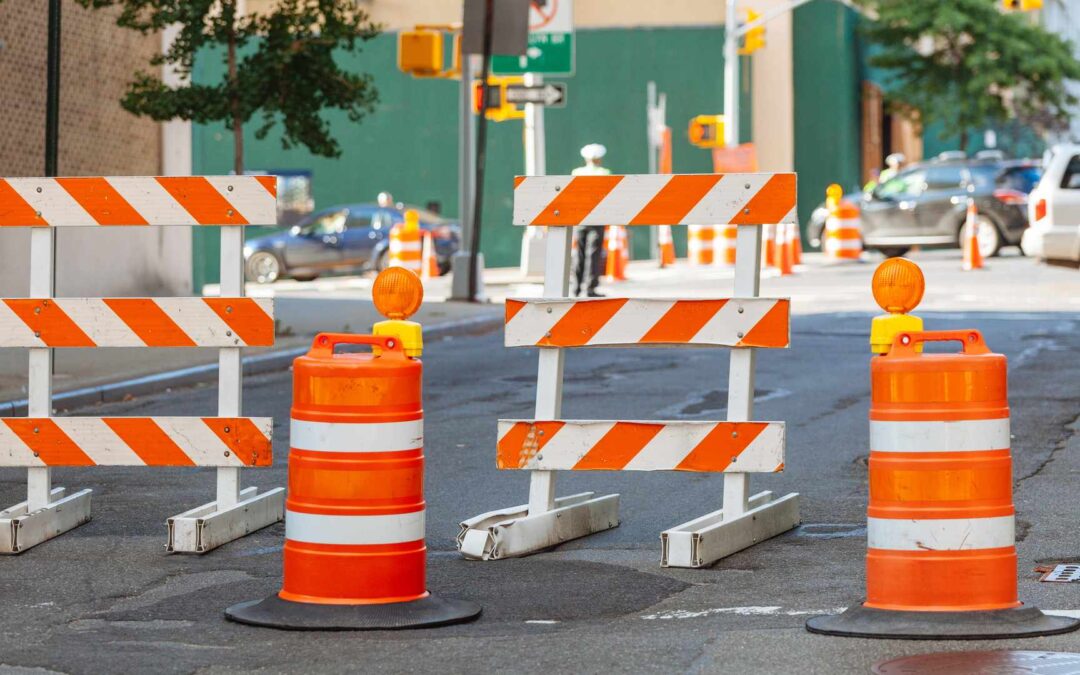Road construction is a necessary aspect of maintaining and improving Georgia’s transportation infrastructure. However, it can also create hazardous conditions that lead to an increase in car accidents. This blog will look into various facets of how road construction impacts car accidents in Georgia, including statistical data, common causes, preventive measures, and legal implications.
Introduction to Road Construction and Car Accidents
Road construction is essential for repairing and enhancing roadways, bridges, and tunnels. In Georgia, these projects are frequent due to the state’s growth and the need to accommodate increasing traffic volumes. Despite the long-term benefits, construction zones often become hot spots for car accidents. Understanding the dynamics of road construction and its impact on car safety is crucial for both drivers and policymakers.
The Scope of Road Construction in Georgia
Georgia’s Department of Transportation (GDOT) continuously undertakes various road construction projects. These range from minor repairs to extensive highway expansions. Major projects like the Transform 285/400 project, which aims to improve one of the busiest interchange areas in the state, highlight the scale of construction activities. Such projects, while beneficial in the long run, pose short-term challenges for road users.
Statistical Analysis of Road Construction-Related Accidents
To understand the extent of the problem, it’s important to look at the statistics surrounding road construction-related accidents in Georgia.
Accident Rates in Construction Zones
According to GDOT, a significant percentage of car accidents occur in or near construction zones. Nationally, the Federal Highway Administration (FHWA) reports that approximately 25% of all road fatalities are linked to work zones. In Georgia, construction zones are frequently flagged as high-risk areas for accidents due to sudden changes in road conditions, reduced speed limits, and the presence of construction equipment and workers.
Fatalities and Injuries
The severity of accidents in construction zones can be alarming. Fatalities and serious injuries are more common in these areas compared to other parts of the road. For instance, in 2019, Georgia reported over 26,000 crashes in work zones, resulting in numerous fatalities and thousands of injuries. These figures underscore the critical need for heightened safety measures and driver awareness.
Common Causes of Accidents in Construction Zones
Several factors contribute to the high incidence of car accidents in road construction zones. Understanding these causes can help in developing strategies to mitigate risks.
Reduced Speed Limits and Sudden Stops
Construction zones typically have reduced speed limits to protect workers and accommodate altered road conditions. However, many drivers fail to adhere to these limits, leading to rear-end collisions and other accidents. Sudden stops are also common, as traffic can unexpectedly slow down due to ongoing work, causing chain-reaction crashes.
Narrow Lanes and Lane Shifts
Construction often requires lane reductions and shifts, which can confuse drivers and increase the likelihood of sideswipe accidents. Navigating through narrower lanes demands more precise driving, which can be challenging, especially for larger vehicles like trucks.
Distracted Driving
Distracted driving is a leading cause of accidents in general, and its impact is even more pronounced in construction zones. Drivers distracted by their phones, GPS systems, or other activities may not notice changes in road conditions or warning signs, leading to accidents.
Inadequate Signage and Poor Lighting
In some cases, the lack of adequate signage or poor lighting in construction zones contributes to accidents. Drivers may not receive sufficient warning about upcoming construction, leading to confusion and sudden maneuvers that result in crashes.
Presence of Construction Equipment and Workers
Construction zones are bustling with activity, including the presence of heavy machinery and workers close to the roadway. The proximity of such hazards increases the risk of accidents, especially if drivers are not paying full attention or do not understand the layout of the construction area.

Preventive Measures and Safety Tips
Reducing the incidence of accidents in construction zones requires a multifaceted approach, including driver education, enforcement of traffic laws, and improvements in construction zone management.
Driver Education and Awareness
Educating drivers about the dangers of construction zones and the importance of adhering to posted speed limits and signs is crucial. Campaigns by GDOT and other organizations aim to raise awareness and encourage safe driving practices.
- Obey Posted Speed Limits: Always adhere to the reduced speed limits in construction zones.
- Stay Alert: Pay attention to the road and avoid distractions.
- Follow Signs and Signals: Respect all construction-related signs and signals, including lane closures and detours.
- Allow Extra Time: Plan for delays and give yourself extra time to navigate through construction zones safely.
Enforcement of Traffic Laws
Strict enforcement of traffic laws in construction zones can act as a deterrent to reckless driving. Georgia’s Move Over Law, which requires drivers to move over a lane or slow down when approaching emergency or construction vehicles, is an example of such measures.
Improvements in Construction Zone Management
Enhancing the design and management of construction zones can significantly reduce accidents. This includes better signage, improved lighting, and the use of barriers to protect workers and direct traffic flow more effectively.
Legal Implications of Construction Zone Accidents
Accidents in construction zones can lead to complex legal situations involving multiple parties, including drivers, construction companies, and government entities.
Determining Liability
Liability in construction zone accidents can be challenging to determine. Factors such as adherence to traffic laws, the adequacy of signage, and the actions of construction workers can all influence the outcome. In some cases, multiple parties may share responsibility for an accident.
- Driver Responsibility: Drivers are expected to exercise caution and follow traffic laws, especially in construction zones. Failure to do so can result in liability for accidents.
- Construction Company Liability: Construction companies have a duty to ensure that their work zones are safe and properly marked. Inadequate signage or unsafe practices can lead to liability for accidents.
- Government Liability: In some cases, government entities responsible for road maintenance and construction may be held liable for accidents if they fail to ensure safe conditions in construction zones.
Legal Recourse for Victims
Victims of construction zone accidents have legal options to seek compensation for their injuries and damages. This can include filing claims with insurance companies or pursuing lawsuits against responsible parties by searching personal injury lawyer near me and finding an expert accident lawyer.
- Personal Injury Claims: Victims can file personal injury claims to recover medical expenses, lost wages, and other damages.
- Wrongful Death Claims: In cases of fatal accidents, family members may pursue wrongful death claims to seek compensation for their loss.
- Workers’ Compensation: Construction workers injured in accidents may be entitled to workers’ compensation benefits.
Real-Life Case Studies
To further understand the impact of road construction on car accidents in Georgia, let’s examine some real-life case studies. These examples highlight the various factors contributing to accidents and the outcomes of legal proceedings.
Case Study 1: The I-85 Bridge Collapse
In March 2017, a massive fire caused a section of Interstate 85 in Atlanta to collapse, leading to extensive road construction to rebuild the bridge. The construction zone became a focal point for traffic congestion and accidents. Despite extensive efforts to manage traffic flow and ensure safety, the area saw a significant increase in accidents during the reconstruction period.
Case Study 2: The Transform 285/400 Project
The Transform 285/400 project, one of the largest construction undertakings in Georgia, aims to improve traffic flow at the interchange of I-285 and GA-400. The project has led to numerous lane closures, shifts, and changes in traffic patterns. These alterations have resulted in a noticeable rise in car accidents, particularly during peak traffic hours. The project’s management team has implemented additional safety measures, such as enhanced signage and increased law enforcement presence, to mitigate risks.
Impact on Different Types of Vehicles
Road construction affects various types of vehicles differently. Understanding these differences can help in tailoring safety measures for each category.
Passenger Vehicles
Passenger vehicles, which constitute the majority of traffic, are highly susceptible to accidents in construction zones due to their smaller size and the tendency of drivers to underestimate the risks associated with construction areas.
- Safety Tips for Passenger Vehicles:
- Maintain a safe following distance.
- Be prepared for sudden stops and changes in traffic patterns.
- Avoid distractions and stay focused on the road.
Commercial Trucks
Commercial trucks face unique challenges in construction zones due to their size and reduced maneuverability. Navigating narrow lanes and making sudden stops can be particularly hazardous for truck drivers.
- Safety Tips for Truck Drivers:
- Follow posted speed limits strictly.
- Pay close attention to signage and detours.
- Ensure adequate rest to avoid fatigue.
Motorcycles
Motorcycles are especially vulnerable in construction zones due to their instability and the higher risk of losing control on uneven surfaces or debris.
- Safety Tips for Motorcyclists:
- Slow down and navigate carefully through construction zones.
- Be extra vigilant for loose gravel and uneven pavement.
- Wear protective gear at all times.
Psychological Impact on Drivers
The stress and anxiety caused by navigating construction zones can also contribute to accidents. Understanding the psychological impact on drivers can help in developing strategies to reduce stress and improve focus.
Stress and Anxiety
The unpredictability of construction zones can lead to heightened stress levels for drivers, resulting in impaired decision-making and slower reaction times. Traffic congestion, detours, and the presence of construction equipment can exacerbate these feelings.
Mitigation Strategies
- Plan Ahead: Check for construction updates and plan your route accordingly.
- Stay Calm: Practice deep breathing exercises to manage stress while driving.
- Allow Extra Time: Avoid rushing by giving yourself plenty of time to reach your destination.
Future Trends in Road Construction and Safety
Advancements in technology and changes in policy are shaping the future of road construction and safety. Staying informed about these trends can help drivers and policymakers prepare for safer construction zones.
Smart Construction Zones
The integration of smart technology in construction zones, such as real-time traffic monitoring and automated warning systems, is becoming more common. These innovations can provide drivers with up-to-date information and improve overall safety.
- Examples of Smart Technology:
- Automated flaggers and traffic control devices.
- Real-time traffic updates through GPS and mobile apps.
- Enhanced visibility with LED signs and warning lights.
Policy Changes
Legislative changes aimed at improving construction zone safety are also on the horizon. These may include stricter penalties for speeding in construction zones and increased funding for safety improvements.
- Potential Policy Changes:
- Enhanced penalties for traffic violations in construction zones.
- Increased investment in construction zone safety measures.
- Improved training programs for construction workers and flaggers.
Conclusion
Road construction is an integral part of maintaining and improving Georgia’s transportation network. However, it comes with significant risks, particularly concerning car accidents in construction zones. By understanding the causes, implementing effective safety measures, and staying informed about legal implications and future trends, drivers and policymakers can work together to create safer roadways. As Georgia continues to grow and develop, prioritizing construction zone safety will be crucial in reducing accidents and ensuring the well-being of all road users.
Additional Resources
For more information on road construction and safety in Georgia, consider visiting the following resources:

